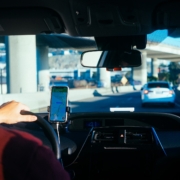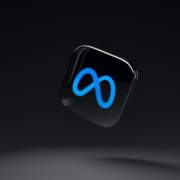Netflix Needs to Be Bigger, Better, Stronger To Have Both Quality of Growth and Quantity of Growth
Netflix just reported its half year earnings to analysts. Wall Street’s reactions were typical.
After the initial knee jerk punishing of Netflix’s stock because Netflix did not capture enough subscribers, Wall Street, its analysts and media talking-heads focused on Netflix’ positive news regarding operating margins, free cash flow and operating profits.
Either way, Wall Street, as usual, focused on quantity of growth. Everyone was completely bummed that Netflix missed the mark on new subscribers. Then, everyone was incredibly pleased that Netflix surpassed expectations with margins, profits and cash flow.
This attitude and ensuing behavior are incredibly harmful for brand-businesses. Wall Street only looks at brand-businesses to determine if the brand-business is getting bigger. Bigger customer base, bigger margins, bigger profits and bigger shareholder value leading to enduring profitable growth.
But, to generate enduring profitable growth, a brand-business must have quality revenue growth. Quality revenue growth relies on two pillars: Quality of Growth and Quantity of Growth. Without quality of growth, there is no generation of customer-perceived brand value. And, without customer-perceived value, there will be no shareholder value. Quality of growth and quantity of growth require a focus on being bigger, better and stronger.
Quality of growth means that the brand-business 1) continues to focus on its brand promise; 2) understands its specific target audience and like-minded others through market segmentation; 3) knows that quality is consistent conformance to customer expectations; 4) recognizes that customer-perceived value is brand-business total costs relative to the total brand-business experience multiplied by trust; and 5) seeks to become the customer’s preferred brand-business.
Quantity of growth is having more users who use more frequently, more offerings, more revenues, more share, more margin, more profit.
The combination of quality of growth and quantity of growth drives quality revenue growth. Not only are customers loyal to the user experience, these customers have less price sensitivity. There cannot be sustainable profitable growth with only quantity of growth. It is not just about being bigger. A brand-business must be better and stronger.
Bigger
Being bigger rests on generating familiarity thereby growing the customer base, i.e., market penetration. Familiarity is not the same as awareness. Awareness is a yes or no question.
Awareness is a light switch: on or off. There are no degrees of awareness: it is binary. Familiarity is more than mere awareness. Familiarity is not an absolute measure; it is measured in degrees, from extremely familiar to not at all familiar.
Penetration means growing the customer base, with the marketing goal to increase both penetration and loyalty. Brand loyalty refers to having customers purchase more often, building brand preference and reducing price sensitivity. Attraction and retention are necessary and are bottom-line goals.
It is quite possible to have increased brand loyalty among a shrinking base of customers. But, increasing loyalty among fewer customers is a risky business. Building loyalty within a declining customer base is just slowing the rate of brand death. If Wall Street wants to fret about Netflix’ fewer customers, they should keep this thought in mind.
Brand loyalty is more than repeat purchase. Brand loyalty is repeat purchase over time based on brands commitment. This means that customers believe a particular brand is the superior alternative for satisfying their particular need in a particular context. It means that the brand is their favorite – their brand preferred – the brand that will be bought again; the brand that will be willingly recommended.
It is unfortunate and short-sighted that analysts and Wall Street are only concerned that fewer subscribers are signing up for Netflix. The concern should be that with fewer customers, there might also be a smaller or declining loyal base which does not bode well for Netflix and shareholder value.
Better
Being better means enhancing the brand-business reputation and generating overall customer satisfaction. Getting bigger is important. But, generating bigness for the sake of sheer size is a waste of resources. The brand-business goal is to be better, not just bigger. Be bigger by being better. Netflix needs to show continuous improvements in the way the brand-business is perceived. Is Netflix perceived for the things for which it wants to be perceived? Are Netflix customers satisfied?
Brand Reputation means Netflix is delivering on its Brand Promise. Is Netflix brand delivering against its agreed upon defining elements? A relevant, differentiated brand-business is a multidimensional promise. It is essential to truly understand the relevant differentiation of the brand-business and include specifically designed metrics to reflect these dimensions.
Satisfaction is about Netflix fulfilling customer needs, desires, expectations. Satisfaction is relative. Relative satisfaction means satisfaction compared to competition. In today’s world, the competitive bar of customer expectations is high.
Stronger
Stronger is about Brand Loyalty, Brand Preference, Trustworthy Brand Value, Trust and Brand Power.
Brand loyalty anchors quality of growth. Loyalty builds high-quality revenue growth, which needs trustworthy brand value to increase. Because there is no shareholder value without brand value, brand loyalty becomes an important element for enduring profitable growth. Netflix must show metrics for brand volume (new subscribers) and brand value (loyalty of subscribers).
Brands preference is a reflection of the strength of the commitment the customer has to Netflix relative to competitive brands. Brand preference is like a ladder. Netflix needs to move customers up the brand preference ladder to true brand loyalty. Moving customers up the ladder from commodity consideration to true brand loyalty can have a big impact on revenues and profitability.
Trustworthy Brand Value is total costs (price, time, effort) relative to total brand experience (benefits, rewards, brand-business character) multiplied by trust. Value is not low price. Price is one of the elements of total costs.
Trust is a multidimensional idea that underpins and drives relationships. Trust is not a single statement. Trust cannot be determined by simply asking, “Is this a trustworthy brand?” The key is identifying the brand-business-relevant “attributes” of trustworthiness.
Brand Power does not mean a brand is big. A big brand is not the same as a powerful brand. Brand Power focuses on three dimensions: familiarity, specialness, and authority. Familiarity means that the customer is not only aware of the brand but feels sufficiently familiar with the brand to express an opinion about it.
Specialness is the combination of both relevance and differentiation.
Authority is the combination of perceptions of overall quality, leadership, and trustworthiness. Quality is driven by customer perception of consistent conformance to expectations. Leadership is driven by an image of not only leading in size, but also leading in thought, popularity and innovativeness. Trustworthiness is based on a reputation for credibility, integrity and responsibility.
Brand power is customer-perceived. It is nice to know how Netflix rates. But, when it comes to making money and satisfying customers, it is necessary to win within the brand’s competitive set. The competitive set must be seen through the eyes of the customer.
Netflix showed some good results. And, Wall Street noticed. However, both Netflix and Wall Street only focused on quantity of growth; only focused on getting bigger. Netflix and Wall Street were really pleased. But, the pleasure is not sustainable until the focus broadens to include getting better and getting stronger generating quality of growth as well as quantity of growth.










